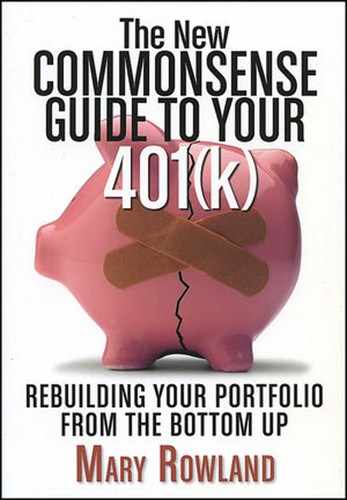REMEMBER THE RULES about discrimination testing? (see p. 69 for details.) Plan sponsors must perform tests to make certain that their plans do not unduly favor the highly paid employees over the rank and file. One important way to draw in the lower-paid employees is with the company match, of course. But in the first decade of the twenty-first century, employers and consultants began to look for a way to enroll employees in the plan so that they would automatically become participants when they joined the company unless they specifically elected to opt out.
The Pension Protection Act of 2006, the most important piece of pension legislation since ERISA, helped make automatic enrollment in 401(k) plans possible. Before that, laws in thirty-one states prohibited any paycheck deduction by an employer without employee consent. The Pension Protection Act overrode the laws in those states and allowed companies to automatically enroll an employee in the plan. But the company must tell the employees that the money will be deducted from their paychecks and deposited in the 401(k) plan, according to Kyle Brown, retirement counsel for Watson Wyatt in Washington.
The employer must also give employees the right to opt out of the plan and to get their money back after the first two paychecks if they choose, says Brown. If an employer uses automatic enrollment and follows a specific formula—deducting 3 percent of an employee's pay when he is first eligible and depositing it in the plan, increasing that to 4 percent on the employee's one-year anniversary, 5 percent on the two-year anniversary and 6 percent after three years—the employer need not perform the nondiscrimination test, Brown says. That's because all employees have been encouraged to participate.
So the provision for automatic enrollment was passed in 2006. But plan sponsors still needed guidance on which investment option was best suited for the money, or what would be the "default option" for employees who were enrolled automatically. At one time, money market funds were the default options. But the Department of Labor deemed money markets funds too conservative and stocks too aggressive, so it issued guidance on where to put this money: Under the new rules, those plans that use a balanced fund, which invests in stocks and bonds, or a target-date fund, which aims to combine a mix of investments that will provide the retirement dollars the participant needs, are permissible. So are "managed accounts," where a manager oversees the assets in the fund.
Since then, the "target date" funds have been one of the fastest growing investment options in 401(k) plans. The decision by the Department of Labor to endorse these funds as an acceptable default option for automatic enrollment ensures continued what was already robust growth in these funds. They are no longer just one choice among many. They've become the number one choice, or the default option, for most plans. By this, I don't mean to say they are the best choice but only the most popular. Part of the reason is the way they are marketed. Many investors believe they offer some sort of guarantee for those who retire in a particular year. That is not true.
The problems and disappointments with these funds became clear in 2008 when nearly all target-date funds turned in disappointing performances. Ron Surz, principal of Target Date Analytics, in San Clemente, California, performed several studies to show how these funds fell short including "The Target Date Emperor Has No Clothes," in March 2009.
Target-date funds are discussed more thoroughly in Part Four: Investing. Everyone who invests in a 401(k) plan should understand the reasoning behind these funds and how they work in practice. And they should understand that the results are in no way guaranteed. For example, even the funds with a target date of 2010 lost a good deal of money in 2008, which Surz argues is a good reason for revamping them. The people who invested in them with plans to retire a year after the crash were not in a position to withstand a 30 percent drop in their nest eggs. So you must look at these funds carefully and make a wise decision rather than simply believing they are right for you because the "target date" is the year you plan to retire.
